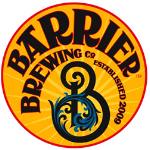British Bitter
The family of British bitters grew out of English pale ales as a draught product in the late 1800s. The use of crystal malts in bitters became more widespread after WWI. Traditionally served very fresh under no pressure (gravity or hand pump only) at cellar temperatures (i.e., real ale). Most bottled or kegged versions of UK-produced bitters are often higher-alcohol and more highly carbonated versions of cask products produced for export, and have a different character and balance than their draught counterparts in Britain (often being sweeter and less hoppy than the cask versions). These guidelines reflect the real ale version of the style, not the export formulations of commercial products. Several regional variations of bitter exist, ranging from darker, sweeter versions served with nearly no head to brighter, hoppier, paler versions with large foam stands, and everything in between. Judges should not over-emphasize the caramel component of these styles. Exported bitters can be oxidized, which increases caramel-like flavors (as well as more negative flavors). Do not assume that oxidation-derived flavors are traditional or required for the style.
IBU (International Bitterness Unit)
Abv (Alcohol By Volume)
SRM (Standard Reference Method)
